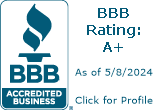Along with the beauty of raw land, it is also an investment beauty by giving you a blank canvas to work with. With your creativity and a little foresight, raw land can be developed into whatever you see fit to make of it. The simplicity and stability that comes with owning the right piece of land at the right price can outweigh the untold problems that often come along with other types of real estate. We all know that more land is not being made. It’s a finite resource.
“Buy land. They’re not making it anymore.” ~ Mark Twain
What Is Raw Land?
In its rawest sense, land is still completely in its most natural state. It has not been farmed for crops or fenced for livestock. It has no manmade improvements like houses or barns, not even developed walking trails. But that doesn’t mean it’s without plenty of potential. Raw land is almost always cheaper than developed land. With raw land, you can typically do whatever you want as long as it meets the needed requirements for topography, soil type, and zoning laws.
There are many different types of raw land, from plains, to mountains, to urban lots, to coastal land, and desert tracts. However, not all raw land is equal. Common types of raw land investments include:
- Residential development land
- Commercial development land
- Row crop and bedded vegetable farmland
- Livestock land
- Vineyards
- Orchards
- Timberland
- Mineral production land
- Recreational land
Alternative Real Estate Holdings
Many people don’t consider that although most land isn’t generating an income, it can still increase in value. As raw land becomes rarer over time, the value of the land goes up, making it a great investment for retirement savings. Although raw land has never been graded, prepared for construction, or subdivided, strategically located raw land is always in demand by real estate investors. However, raw land investing is more suitable for some investors than for others depending on what an individual wants from a specific deal.
Investment Strategies
Raw land is generally difficult to find in urban centers. What does exist is likely highly expensive along with having significant zoning restrictions or has other reasons that make it undesirable. But there are many viable raw land tracts found slightly beyond city limits where real estate development hasn’t yet reached but is imminent. There are also tracts of raw land far from metro areas with solid strategic investment opportunities.
Buy and hold is a favorite with investors expecting high price appreciation over several years. For younger Solo 401k account owners, this can be a desirable strategy if they won’t need access to the profits until their retirement years. The primary expense that the Solo 401k account will need to cover is property taxes. Near retirement investors may be interested in this strategy if they don’t expect to need cash from the investment for many years to come or want to leave the investment as a legacy for heirs. As an estate-planning tool, investors may want to consider holding raw land in a Roth Solo 401k.
Development is a more complex strategy for investors knowledgeable or willing to learn about land use rights, entitlements, easements, utility improvements, and subdividing for development. It requires significant capital investment beyond the purchase cost of the raw land and requires help from specialized experts.
More Strategies to Consider
Farmland in some areas is highly valuable for leasing out, actively farming, or to be profitably sold in the future. However, not all raw land is suitable for farming. The amount of acreage, type of soil, climate, and local farming infrastructure are a few important considerations. On the positive side, there are special tax advantages available for farmland and all 50 states have some form of favorable property tax rates.
Wildlife preservation may be suitable for people with an inclination towards environmental protection but it has fewer income-producing opportunities. This may be a good fit with a buy and hold strategy. One idea is to designate your land restricted from hunting, camping, logging, and fishing. As the world continues developing rapidly, a large tract of preserved land could become highly valuable in the more distant future because, after all, they aren’t make any more of it.
Recreational uses are also a possibility. Keep in mind that your personal use of land owned by your Solo 401k is limited because of prohibited transactions. However, this can be an opportunity to combine generating income with limiting development. Possibilities include businesses for hunting, fishing, horse trails, camping, ATVing, and more.
Simple Steps for Investing Your Solo 401k
Investing a Solo 401k in raw land can be amazingly simple:
- Open a Solo 401k retirement account.
- Fund it with a qualified rollover or regular contributions.
- Choose a tract of raw land for investment.
- Use non-recourse financing. IRS regulations allow the use of non-recourse financing. This limits your personal liability because non-recourse loans keep the creditor’s claim limited to the collateral only.
- Title the property in the name of your Solo 401k. You sign on behalf of your plan as the trustee, but the raw land is titled to your Solo 401k.
- Pay for maintenance of the land with your Solo 401k trust funds. Pay for any maintenance, repairs, or upgrades to the land directly from the Solo 401k. Also, any income generated by the property goes directly to your Solo 401k for your benefit during retirement.
Avoid Prohibited Transactions
As the Solo 401k plan owner, you must follow certain rules to avoid prohibited transactions. If your Solo 401k raw property requires development before it can be leased, sold, or for another reason, the use of personal funds, assets, or efforts is limited and restricted. For instance, if your Solo 401k land needs an access road developed, you cannot personally pay for it. Nor can you fire up your personal bulldozer to plow the access road yourself.
Raw land is the most versatile investment you can make. It is also an underutilized real estate investing strategy. Raw land provides endless options and opportunities while being free of utility and infrastructure expenses. Property taxes are among the lowest. Holding raw land in your Solo 401k is an excellent investment to consider for your portfolio.






6 Responses
I have the land but not enough cash in the Solo to build a vacation rental home on it thus greating increasing the value of that raw land. Where does one find other investors to partner with for the build and then sell of the new home?
Hi Ken! I’d say the Solo 401k Network at https://solo401k.net is a great place to connect with other self-directed investors!
How long does raw land have to be in solo 491k before I can sell it?
Great question, Paula! There’s no specific set time the IRS requires you to hold the investment before selling. However, we strongly recommend you do not “flip” properties in the Solo 401k, as the IRS may want to charge Unrelated Business Income tax (UBIT) on that activity.
I am buying a 5 acre lot. There is an additional 5 acres behind my lot. Would I be able to purchase it with my Solo 401K so that I can enjoy the views and know that nobody will be building or using it while I live there? Or is that a conflict of interest?
Could be possible but it should be a totally separate transaction from your primary residence/your lot. If they can be separate and distinct transactions then this may be OK and your legal counsel can confirm that as well!